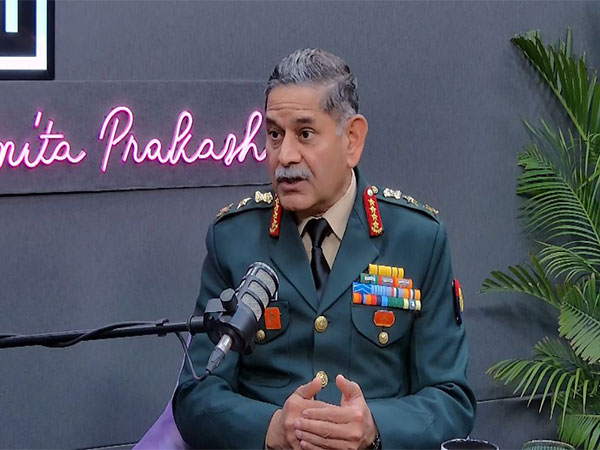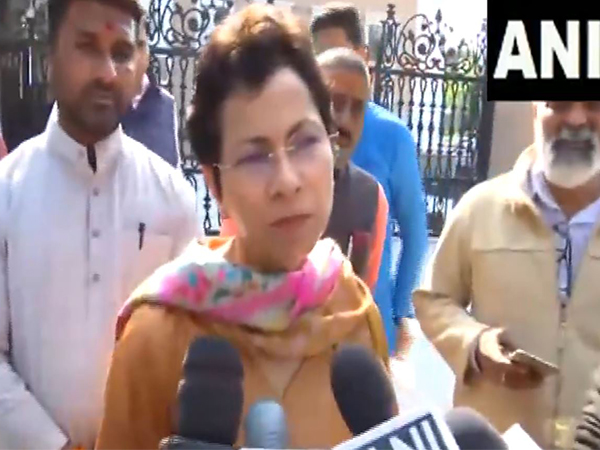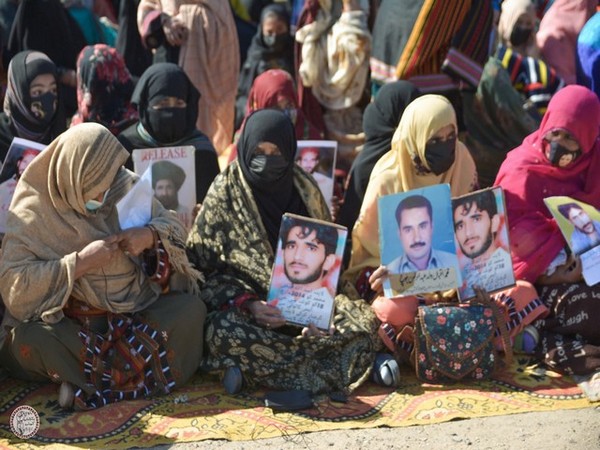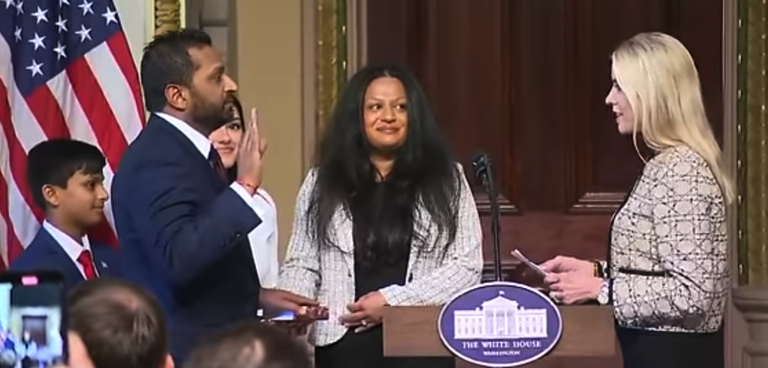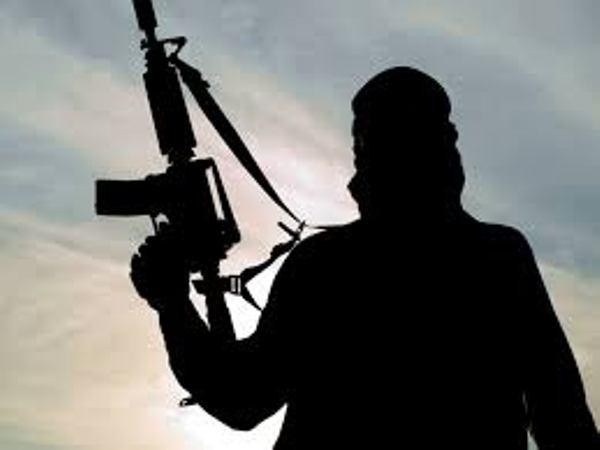
By Dr Amjad Ayub Mirza
Glasgow [Scotland], May 6 (ANI): According to the State of Human Rights 2019 annual report published by Human Rights Commission of Pakistan (HRCP), “Religious minorities remained unable to enjoy the freedom of religion or belief guaranteed to them under the constitution… this has meant the desecration of their sites of worship, the forced conversion of young women, and constant discrimination in access to employment.”
At its inception the constituent assembly of Pakistan was 96 members strong and was bold enough to elect a Dalit of Namasudra community, Jogendra Nath Mandal, as its chairman. Earlier Mandal had been a supporter of Subhash Chandra Bose but when Netaji was expelled from the Indian National Congress in 1940, Mandal quit the party and joined Muslim League led by Muhammad Ali Jinnah.
As Muslim League joined the Interim Government of India (2 September 1946 – 15 August 1947), Jinnah nominated Mandal as one of the five representatives of Muslim League. Mandal became the Law and Labour minister of the newly founded state of Pakistan thus becoming the highest-ranking Hindu in the government.
However, in 1950, confronted with what he called the Hindu bias of the Pakistan executive he presented his resignation to the then Prime minister of Pakistan Liaquat Ali Khan.
In his resignation letter dated 8 October 1950 Mandal raised his concerns for the systematic discrimination being carried out against Hindus as follows: ‘East Bengal government is… following the well- planned policy of squeezing Hindus out of the Province…I must say that this policy of driving out Hindus from Pakistan has succeeded completely in West Pakistan …They now want to get rid of the Hindu intelligentsia so that the political, economic and social life in Pakistan may not in any way be influenced by them.’
Soon after Mandal left Pakistan and relocated to India, Barelvi sect based Tahafuz Khatam e Naboovat, an Islamic religious movement aiming to protect the belief in the finality of Prophet Muhammad, engulfed Pakistan . The movement gained an unprecedented momentum encouraging the second Prime minister of Pakistan Khawaja Nazimuddin (October 1951 – April 1953) to state the following: ‘I do not agree that religion is a private affair…nor do I agree that in an Islamic state every citizen has identical rights.’
Since 1950s there has been a continuous decline in the Hindu population of Pakistan . According to the census conducted in 1951 non-Muslims constituted 14.20 per cent of the then both the West and East wings of Pakistan (3.4 per cent in West and 23.02 per cent in East Pakistan respectively).
Today, the Hindu population has declined to 1.85 per cent. According to a report compiled in 2019 by the members of the European Parliament one of the main reasons for the decline in religious minorities in Pakistan is stated to be communal violence and forced conversions. In recent years persecution of religious minorities has become bleak and brutal.
In 2009, the Taliban imposed Islamic tax on non-Muslims. In Orakzai Agency, situated deep in the north-western part of Pakistan bordering Afghanistan, houses of 11 Sikh families were demolished when they refused to pay the Islamic tax. The following year a Sikh youth was beheaded in Khyber Agency due to failure of his family to pay Islamic tax.
Persecution of Sikhs has resulted in the internal displacement of the Sikh community who have since relocated to Peshawar, Hassanabdal and Nankana sahib, which have larger Sikh population.
However, these cities proved to be an equally dangerous place for them. In 2018, Charanjeet Singh a prominent Sikh community leader was shot dead in Peshawar bringing the total number of target killings of prominent Sikh community leaders to a staggering ten. On January 3, 2020 a crowd of hundreds of stone-pelting Muslims led by a local mullah laid a siege at the Gurudwara Nankana Sahib threatening to convert the holy shrine into a mosque.
In 2006, a Hindu temple in Lahore was demolished and a multi-storied commercial plaza was built in its place. In July 2010, a Hindu youth drank water from a tap near a mosque, prompting 150 residents of Murad Memnon Goth in Karachi attacking 60 unarmed Hindus who lived in the neighbourhood and as a result 400 families were threatened with enforced migration. In January 2014 a guard was shot and killed during an attack on a temple in Peshawar.
On March 15, 2014 angry Muslims burnt a Hindu temple and a dharamshala to ground in Larkana in Sindh Pakistan . The All Pakistan Hindu Rights Movement (PHRM) has claimed that 95 per cent of all Hindu temples erected in Pakistan have been converted into mosques and commercial buildings.
This means that out of 428 Hindu temples only 13 are operational. In 2013 around 1000 Hindu families migrated to India due to fear of religious persecution. Around 5000 Hindus are migrating to India every year. Religious persecution is not confined just to the Sikh or Hindu communities. Between November 2015 and October 2016 ‘Pakistan topped the list of most documented attacks on churches accounting for 600 of the total 1329 churches attacked worldwide during the same period.’
Another community that has faced religious persecution in the Islamic Republic of Pakistan is the Ahmadi Muslims who are forbidden to call themselves Muslims due to an amendment made to the constitution of the country in 1974, which declared them to be non-Muslims.
In May 2010, 94 people died and 120 reportedly injured when the Taliban simultaneously targeted two Ahmadi mosques in Lahore. A report released in 2018, listed at least 3963 news items and 532 editorial pieces published in Urdu media that were tagged as ‘Hate propaganda’ against Ahmadis.
Forced conversions of religious minorities are another area of concern. According to Amarnath Motumal a researcher who works for the Human Rights Commission of Pakistan , more than 20 Hindu girls are being kidnapped and converted to Islam each month.9 Religious Minorities in Pakistan , an NGO that specialises in minority rights, reports that in 2019 members of European Parliament stated that an estimated 1,000 girls are forcibly converted to Islam.
Over the past seven decades since its birth Pakistan has evolved to become a demon that haunts its own citizens if they do not belong to the official religion of the state. The situation is not expected to improve unless Islamic religion is removed as the basis of the constitution of Pakistan and an inclusive social contract is re-written.
Meanwhile the Citizen Amendment Act (CAA) passed by the Indian Parliament on December 11, 2019, which guarantees religious minorities from Pakistan, Afghanistan and Bangladesh asylum on arrival remains the only hope for minorities in Pakistan who have the resources to manage an escape across the treacherous Pakistan i border and enter the Republic of India. (ANI) [Disclaimer: Dr Amjad Ayub Mirza is an author and human rightsactivist from Mirpur in PoK. He currently lives in exile in the UK.]

